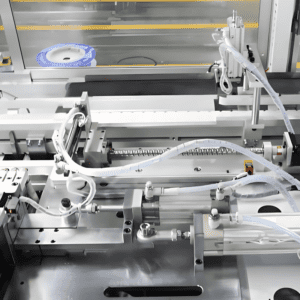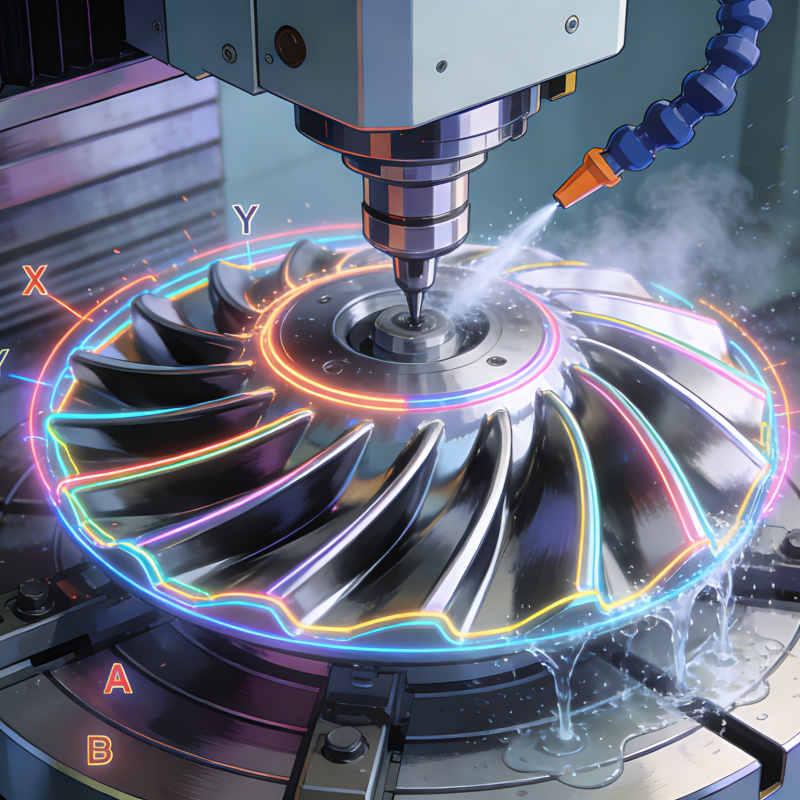As the global race for AI dominance intensifies, the United States has thrown down a new gauntlet. On July 23, 2025, the Trump Administration released “America’s AI Action Plan,” a sweeping strategy designed to propel the U.S. to the forefront of artificial intelligence development. Framed as a blueprint to “win” in AI, the plan eschews heavy-handed oversight in favor of a clear mantra: innovation first. With 90-plus federal policy actions spanning three core pillars—accelerating AI innovation, building domestic AI infrastructure, and leading global AI diplomacy—the initiative aims to dismantle regulatory barriers, fortify critical industries, and outpace competitors in a technology that’s reshaping economies and national security worldwide.
The Trump Administration released America’s AI Action Plan (the “Plan”) on July 23, 2025, a comprehensive strategy to attempt to “win” the race to achieve global dominance in artificial intelligence (“AI”). The Plan identifies over 90 federal policy actions that the Trump Administration will take in the coming weeks and months through a three-pillar approach: (i) accelerating AI innovation, (ii) building American AI infrastructure, and (iii) leading in international diplomacy and security. The Plan, developed in coordination with multiple federal agencies and industry stakeholders, sets forth a broad policy agenda aimed at fostering innovation over regulation, revitalizing critical industries, and safeguarding national security interests in the rapidly evolving AI landscape.
Pillar I: Accelerate AI Innovation
The Plan prioritizes the removal of regulatory barriers to AI development, emphasizing deregulation and the rescission of prior executive actions perceived as restrictive. Key initiatives include:
·Deregulation and Federal Funding Alignment: Directing agencies to identify and repeal regulations at the state and federal levels that hinder AI innovation, and to condition federal AI funding on states’ regulatory environments.
·Free Speech and Objectivity in AI: Mandating that federal AI procurement and standards promote free speech and eliminate ideological bias, including revising the National Institute of Standards and Technology AI Risk Management Framework to eliminate references to misinformation; diversity, equity, and inclusion; and climate change.
·Promotion of Open-Source and Open-Weight AI: Supporting open-source and open-weight AI models by improving access to computing resources for startups, academics, and researchers and fostering public-private partnerships to expand AI research and adoption.
·AI Adoption Across Sectors: Establishing regulatory sandboxes or Centers of Excellence and launching domain-specific efforts to accelerate AI deployment in critical sectors such as healthcare, energy, and agriculture, performing assessments on the comparative level of adoption of AI tools by the United States, its competitors, and its adversaries’ national security establishments, and enhancing intelligence on foreign frontier AI projects that may have national security implications.
·Workforce Development: Advancing a worker-first AI agenda through expanded AI literacy, skills training, and rapid retraining programs, with new guidance to facilitate employer investment in AI-related education.
·Next-Generation Manufacturing: Investing in developing and scaling foundational and translational manufacturing technologies and identifying supply chain challenges to American robotics and drone manufacturing.
·AI-Enabled Science and Data: Funding automated, cloud-enabled laboratories, supporting Focused-Research Organizations or similar entities using AI, incentivizing public release of high-quality scientific and engineering datasets, and requiring federally funded researchers to disclose non-proprietary, non-sensitive datasets that are used by AI models during the course of research and experimentation.
·Build World-Class Scientific Datasets: Directing federal agencies and committees to enhance AI model training and evidence-building by recommending minimum data quality standards, expanding secure and accessible use of federal data through new regulations and secure compute environments, creating an online portal for controlled data access, and exploring a whole-genome sequencing program for life on federal lands to generate valuable data for future AI models.
·Advance the Science of AI: Prioritize investment in theoretical, computational, and experimental research to discover new and transformative paradigms that advance the capabilities of AI.
·AI Interpretability, Control, and Robustness Breakthroughs: Advance national security and high-stakes AI applications by launching coordinated federal initiatives to achieve breakthroughs in AI interpretability, control, and robustness, including through a technology development program and hackathon.
·AI Evaluation: Prioritizing developing a rigorous ecosystem for AI evaluation and testbeds, particularly for high-stakes applications.
·Government and Defense AI Adoption: Formalizing interagency AI coordination, streamlining AI procurement, and accelerating AI integration within the Department of Defense, including talent development and operational automation.
·Protection of AI Innovations: Enhancing government collaboration with industry to secure AI intellectual property and systems, and addressing legal challenges posed by synthetic media and deepfakes.
·Assist the Legal System in Countering Synthetic Media: To combat AI generated media producing fake evidence in court, the Trump Administration will recommend deepfake standards to the Federal Rules of Evidence.
Pillar II: Build American AI Infrastructure
Recognizing the importance of meeting the infrastructural demands of AI, the Plan outlines measures to expedite the construction and security of data centers, semiconductor manufacturing, and energy systems:
·Streamlined Permitting: Reforming environmental and permitting regulations to accelerate the development of data centers, semiconductor facilities, and supporting energy infrastructure, including expanded use of categorical exclusions and federal lands.
·Electrical Grid Modernization: Stabilizing and optimizing the national power grid to meet the demands of AI-driven industries, with a focus on reliability, advanced grid management, and integration of new energy sources.
·Semiconductor Manufacturing: Revitalizing domestic semiconductor production by removing extraneous policy requirements and streamlining grant and research programs to integrate advanced AI tools.
·Secure Data Centers: Creating new technical standards for high-security AI data centers and advancing agency adoption of classified compute environments to support scalable and secure AI workloads.
·Training Workforce for AI Infrastructure: Launching national initiatives to identify and train workers for critical AI infrastructure roles, expanding apprenticeships, and updating educational curricula to align with industry needs.
·Cybersecurity and Resilience: Establishing an AI Information Sharing and Analysis Center; issuing guidance to private sector entities on detecting, remediating, and responding to AI-specific vulnerabilities; and promoting secure-by-design AI technologies to protect critical infrastructure.
·Incident Response: Integrating AI considerations into incident response frameworks and playbooks and promoting best practices for AI system security and resilience.
Pillar III: Lead in International AI Diplomacy and Security
The Plan states that to succeed in the global AI competition, the United States must drive adoption of American AI systems, computing hardware and standards nationally and globally. The Plan proposes to do so by:
·Export of American AI: Facilitating the export of the full U.S. AI technology stack to allies and partners, and leveraging economic diplomacy to promote adoption of American standards.
·Countering Adversarial Influence: Advocating for international AI governance approaches that promote innovation, reflect American values and counter authoritarian influence, including China.
·Strengthen AI Compute Export Controls and Enforcement: Exploring leveraging new and existing location verification features on advanced AI compute to ensure that the chips are not in countries of concern and establishing efforts for global chip expert control enforcement.
·Plug Loopholes in Existing Semiconductor Manufacturing Export Controls: Developing new export controls on semiconductor manufacturing sub-systems with corresponding enforcement.
·Global Alignment: Promoting international alignment and awareness on technology protection measures, including the use of secondary tariffs and the Foreign Direct Product Rule to deter allies from supplying adversaries with technologies on which the United States is seeking to impose export controls.
·National Security Risk Evaluation: Partnering with AI developers to evaluate frontier models for national security risks, assessing potential security vulnerabilities and malign foreign influence arising from the use of adversaries’ AI systems in critical infrastructure and elsewhere in the American economy, and recruiting top AI researchers to federal agencies.
·Biosecurity: Mandating robust screening and customer verification for nucleic acid synthesis in federally funded research and developing and enforcing data-sharing mechanisms to prevent misuse of AI in biological applications.
Conclusion
The Trump Administration’s AI Action Plan is more than a policy document—it’s a declaration of intent to shape the global AI landscape on America’s terms. By prioritizing deregulation, infrastructure, and global influence, it bets that innovation, unshackled from red tape, will outpace more regulated approaches. But success hinges on execution: turning 90 policy actions into tangible progress, bridging gaps between federal agencies and industry, and ensuring that gains in AI translate to economic strength and national security. As China and other competitors advance their own AI strategies, the stakes could not be higher. This plan sets the stage for the next phase of the AI superpower rivalry—and the world will be watching to see if its “innovation over regulation” mantra delivers the edge it promises. Details will emerge as federal agencies begin rolling out implementation guidelines, but one thing is clear: the race for AI dominance just accelerated.





















